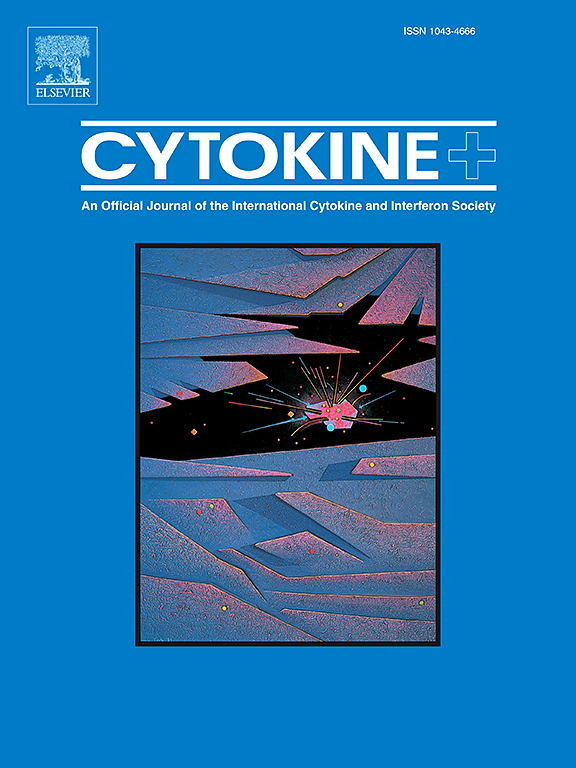非西汀和尼可地尔对大鼠佐剂性类风湿关节炎的影响:TLR4/NF-κ b诱导的焦亡、Nrf-2/HO-1和OPG/RANKL通路的新作用
IF 3.7
3区 医学
Q2 BIOCHEMISTRY & MOLECULAR BIOLOGY
引用次数: 0
摘要
目的和背景:我们的研究探讨了非瑟酮和/或尼可地尔(NIC)干预抗风湿病潜力的新机制。方法与材料:50只雄性大鼠分为;对照组、类风湿关节炎(RA)组、非司汀治疗组、nic治疗组和联合治疗组。我们评估了爪厚、关节炎指数、血清CRP、RF、OPG、RANKL、滑膜TLR4、NLRP3、caspase-1、GSDMD、Nrf-2和HO的基因表达,以及滑膜组织病理学和NF-κB免疫反应性。结果:经组织病理学证实,联合治疗具有较好的抗风湿潜能,可抑制氧化应激和NF-κB,下调滑膜TLR4、NLRP3、caspase-1、GSDMD,提高血清OPG,降低RANKL。结论:我们的研究揭示了TLR4/NF-κB热凋亡信号通路、Nrf-2/HO-1通路和OPG/RANKL通路作为非瑟酮和/或NIC抗类风湿潜力的新机制,具有联合治疗的优势,为RA患者优化治疗方案的有效性和患者预后提供了希望之光。本文章由计算机程序翻译,如有差异,请以英文原文为准。
Effects of Fisetin and Nicorandil on adjuvant-induced rheumatoid arthritis in rats: Emerging role of TLR4/NF-κB-induced Pyroptosis, Nrf-2/HO-1, and OPG/RANKL pathways
Aim and background
Our study explored the novel mechanisms implicated in the anti-rheumatic potential of fisetin and/or nicorandil (NIC) intervention.
Methods and Materials:
Fifty male rats were categorized into; control, rheumatoid arthritis (RA), fisetin-treated RA, NIC-treated RA, and co-treated RA groups. We assessed paw thickness, arthritis indices, serum CRP, RF, OPG, RANKL, and gene expressions of synovial TLR4, NLRP3, caspase-1, GSDMD, Nrf-2, and HO, along with synovial histopathology and NF-κB immunoreactivity.
Results
The combined therapy demonstrated significantly better anti-rheumatic potential, suppressing oxidative stress and NF-κB, downregulating synovial TLR4, NLRP3, caspase-1, GSDMD, and increasing serum OPG while decreasing RANKL, confirmed by histopathological findings.
Conclusion
Our investigation uncovered the TLR4/NF-κB pyroptotic signaling, Nrf-2/HO-1, and OPG/RANKL pathways as novel mechanistic insights into the anti-rheumatoid potential of fisetin and/or NIC, with superiority of combination approach, providing a beacon of hope for RA patients in terms of optimizing treatment protocol effectiveness and patient outcomes.
求助全文
通过发布文献求助,成功后即可免费获取论文全文。
去求助
来源期刊

Cytokine
医学-免疫学
CiteScore
7.60
自引率
2.60%
发文量
262
审稿时长
48 days
期刊介绍:
The journal Cytokine has an open access mirror journal Cytokine: X, sharing the same aims and scope, editorial team, submission system and rigorous peer review.
* Devoted exclusively to the study of the molecular biology, genetics, biochemistry, immunology, genome-wide association studies, pathobiology, diagnostic and clinical applications of all known interleukins, hematopoietic factors, growth factors, cytotoxins, interferons, new cytokines, and chemokines, Cytokine provides comprehensive coverage of cytokines and their mechanisms of actions, 12 times a year by publishing original high quality refereed scientific papers from prominent investigators in both the academic and industrial sectors.
We will publish 3 major types of manuscripts:
1) Original manuscripts describing research results.
2) Basic and clinical reviews describing cytokine actions and regulation.
3) Short commentaries/perspectives on recently published aspects of cytokines, pathogenesis and clinical results.
 求助内容:
求助内容: 应助结果提醒方式:
应助结果提醒方式:


